May 7th, 2014
When a deadly hurricane sank the SS Central America 160 miles off the coast of South Carolina in 1857, the steamship was carrying nearly a half-million ounces of gold bars and freshly minted coins. Last month, a deep-ocean recovery company — Odyssey Marine Exploration — pulled nearly 1,000 ounces of gold from the wreck in a successful reconnaissance dive 1.3 miles below the surface.

During the dive, Odyssey's eight-ton remotely operated vehicle ZEUS “flew” over the shipwreck to assess its condition. Gold ingots, coins and other artifacts were clearly visible on the surface and no excavation was required for their removal.
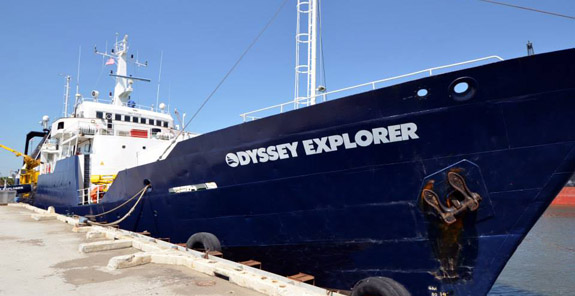
The Odyssey crew believes that the five gold bars and two coins found at the site confirm it still contains a fortune in precious metals. Odyssey has an exclusive contract to conduct an archaeological excavation and recover the remaining valuable cargo from the SS Central America shipwreck. The team expects to work the site until late summer.
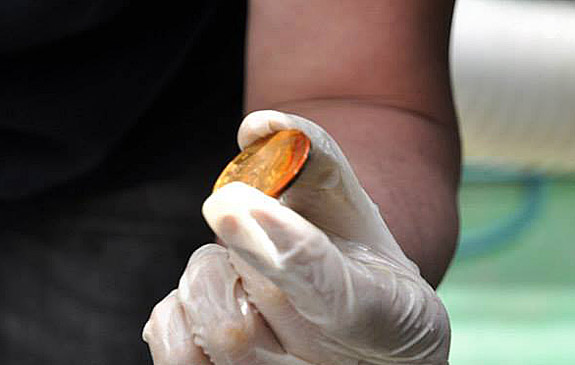
A previous expedition to the site in 1988 by the Columbus-America Discovery Group had to be cut short because of legal entanglements. At that time, only 5 percent of the site had been explored.
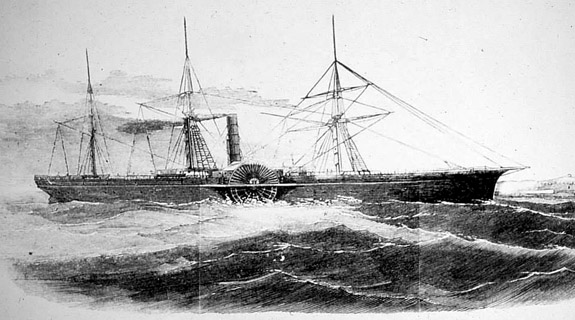
Worth $628 million in today’s dollars, the SS Central America’s precious cargo was en route to New York from San Francisco via the Panama Canal when the 280-foot-long, wooden-hulled, side-wheel “Ship of Gold” got caught up in a fateful storm that took 425 lives and left it paralyzed at the bottom of the Atlantic Ocean.
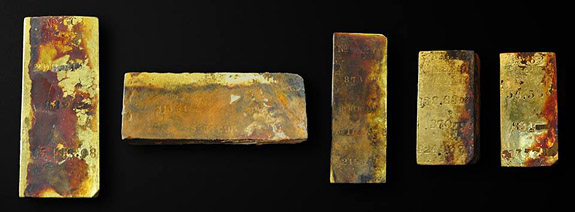
The recovered gold bars varied in weight from 96.5 to 313.5 troy ounces and were stamped with the assayer's marks. The $20 Double Eagle coins were dated 1850 and 1857, with one bearing a mint mark from Philadelphia and the other from San Francisco.
It was reported that the commercial shipment of gold was valued in 1857 at $93,000, but there may have been a “substantial” amount of passenger gold valued in 1857 at upwards of $1.28 million.
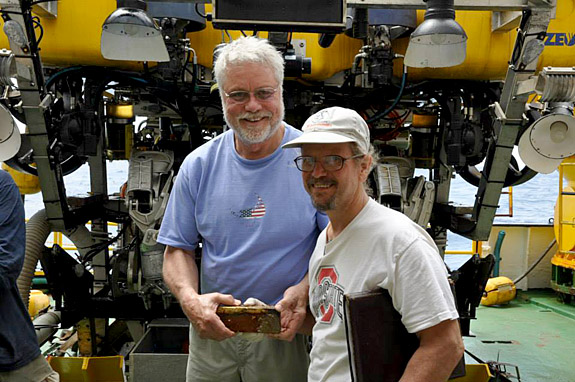
"This dive confirms for me that the site has not been disturbed since 1991, when I was last there," noted Bob Evans, chief scientist and historian for the Recovery Limited Partnership, which legally owns the shipwreck.

During the dive, Odyssey's eight-ton remotely operated vehicle ZEUS “flew” over the shipwreck to assess its condition. Gold ingots, coins and other artifacts were clearly visible on the surface and no excavation was required for their removal.

The Odyssey crew believes that the five gold bars and two coins found at the site confirm it still contains a fortune in precious metals. Odyssey has an exclusive contract to conduct an archaeological excavation and recover the remaining valuable cargo from the SS Central America shipwreck. The team expects to work the site until late summer.

A previous expedition to the site in 1988 by the Columbus-America Discovery Group had to be cut short because of legal entanglements. At that time, only 5 percent of the site had been explored.

Worth $628 million in today’s dollars, the SS Central America’s precious cargo was en route to New York from San Francisco via the Panama Canal when the 280-foot-long, wooden-hulled, side-wheel “Ship of Gold” got caught up in a fateful storm that took 425 lives and left it paralyzed at the bottom of the Atlantic Ocean.

The recovered gold bars varied in weight from 96.5 to 313.5 troy ounces and were stamped with the assayer's marks. The $20 Double Eagle coins were dated 1850 and 1857, with one bearing a mint mark from Philadelphia and the other from San Francisco.
It was reported that the commercial shipment of gold was valued in 1857 at $93,000, but there may have been a “substantial” amount of passenger gold valued in 1857 at upwards of $1.28 million.

"This dive confirms for me that the site has not been disturbed since 1991, when I was last there," noted Bob Evans, chief scientist and historian for the Recovery Limited Partnership, which legally owns the shipwreck.


